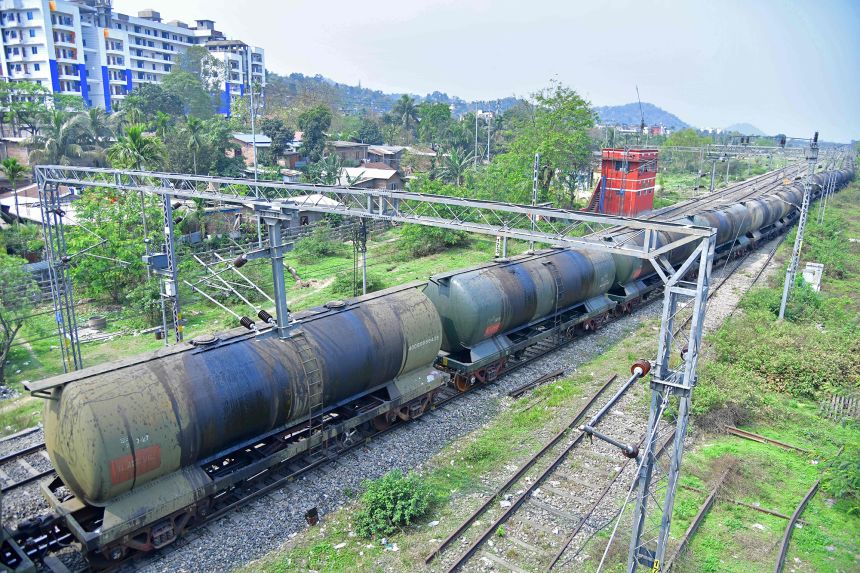
Days before his tariff deadline, President Donald Trump is increasing pressure on India by casting doubt on the possibility of reaching an agreement with a major trading partner.
In two social media statements on Wednesday, Trump took aim at India’s trade restrictions and specifically mentioned the country’s ongoing reliance on Russian military hardware and oil purchases. He reiterated his pledge to apply 25% tariffs on all imports from India and threatened to impose yet another “penalty” in retaliation for India’s energy purchases.
“Remember, while India is our friend, we have, over the years, done relatively little business with them because their Tariffs are far too high, among the highest in the World, and they have the most strenuous and obnoxious non-monetary Trade Barriers of any Country,” Trump wrote on Truth Social. “Also, they have always bought a vast majority of their military equipment from Russia, and are Russia’s largest buyer of ENERGY, along with China, at a time when everyone wants Russia to STOP THE KILLING IN UKRAINE — ALL THINGS NOT GOOD!”
Trump’s tariff increase follows a series of agreements with key US trading partners that established a baseline of roughly 15% to 20% and included obligations to increase foreign investment and market access for US goods.
It is a significant defeat for India in a months-long attempt to close a deal that officials thought was almost final on multiple times.
In an effort to reach a final agreement, top trade officials have been traveling back and forth between Washington and New Delhi for months. However, officials claim that Trump is feeling more confident in the last days before the administration’s halted “reciprocal” tariffs are set to resume on August 1 due to recent trade agreements with Japan and the European Union.
According to the officials, Trump’s ability to obtain promises about market access for US producers has emerged as a key concern in the wake of his recent reviews of draft offers. According to one official, that has significantly hampered the chances of reaching an agreement with India.
The official stated, “They’re willing to go part of the way.” “But the president isn’t in a ‘part of the way’ mood – he wants barriers removed completely or as close to completely as possible.”
Trump’s approach is tied in part to a strategy that has become increasingly apparent to foreign trade officials involved in late-stage talks: Trump has no qualms about letting those higher tariffs go into place – a message he’s delivered repeatedly in public over the last several weeks.
However, it has also produced a situation where Trump has adopted a pronounced sense of power over trading partners, including close allies, who are fighting for access to the biggest consumer market in the world.
“A 25% tariff will address and remedy the situation in a way that’s good for the American people,” Kevin Hassett, director of the National Economic Council, stated at the White House on Wednesday. “I think President Trump is frustrated with the progress we’ve made with India,” Hassett said.
According to Hassett, the tariffs on India may make them “rethink their practices.”
“I think Indian companies will eventually be moving their production to the United States, and they may even open their markets to us more so that we reevaluate our future trades,” Hassett continued.
Russia’s sanctions
At the same time, Trump has escalated in parallel his threat to impose secondary sanctions on Russian energy exports in response to Russian President Vladimir Putin’s refusal to de-escalate attacks on Ukraine.
As the countries that buy the majority of Russian energy supplies, China and India would be the most directly impacted by that dynamic, which has long been considered across administrations.
Russia remains the world’s largest supplier of oil to India, which has seen a slight increase in imports this year. About 35% of India’s total supply come from Russia, with Saudi Arabia, Iraq, and the United Arab Emirates coming in second and third, respectively.
TFD has contacted the White House to inquire about the exact amount of the penalty and whether India will receive the same formal letter from the US as other countries indicating the levy.
Trump warned reporters on Tuesday that if they don’t come to an agreement by August 1, India would be subject to 25% tariffs.
Trump said that nations who buy Russian oil will be subject to secondary sanctions earlier this month when he gave Russia a 50-day deadline to achieve a ceasefire. Since then, the ceasefire deadline has been rescheduled for August 8.
According to the officials, Trump has been quietly communicating to his colleagues that his threat to drastically increase the scope of the US sanctions regime now in place against Russia is real and not a tactic for negotiations.
During trade negotiations in Stockholm on Tuesday, Treasury Secretary Scott Bessent claimed he personally conveyed the message to his Chinese counterparts.
At the end of the negotiations, Bessent informed reporters at a news conference, “I think anyone who buys sanctioned Russian oil should be ready for this.”
India remained the second-largest purchaser of Russian fossil fuels behind China, according to a June analysis of Russian fossil fuel exports and sanctions by the Centre for Research on Energy and Clean Air.
For breaking news and live news updates, like us on Facebook or follow us on Twitter and Instagram. Read more on Latest Business on thefoxdaily.com.



COMMENTS 0